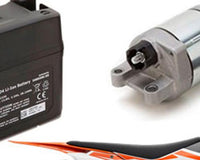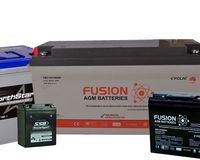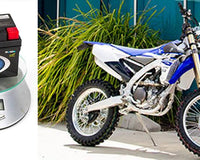Table of Contents
The CR2430 lithium coin battery has a high energy density and long shelf life, which makes it commonly used in many electronic appliances including:
- Calculators
- Digital watches and Pagers
- Garage remotes
- Keyless entry remotes
- Fitness appliances (tensiometers, thermometers, heart-rate monitors, and pacemakers)
- Toys and games
- Backup memory devices
A coin or button-type primary battery’s name is derived from its shape and size as illustrated below.

C= battery chemistry (Li-MnO2)
R= battery shape (round)
Three or four reference model numbers = dimensions of the battery (diameter: 24.5mm and thickness: 3.0mm).
Using the wrong lithium battery in an electronic device can cause damage to the appliance. Therefore, it’s crucial to understand which battery types are used for what purposes.
Here’s the definitive guide to all things CR2430:
Why Do You Need a Lithium Battery?
A battery’s chemistry determines its overall performance.
Lithium coin cells are small discs composed of lithium (anode cap), manganese dioxide (cathode), lithium salt in organic solvent (electrolyte), and nickel-plated stainless steel (can).
Rechargeable lithium-ion secondary cells are not to be confused with the non-rechargeable lithium primary cells.
Lithium-ion cells have an intercalated lithium compound (anode cap) and graphite (cathode), resulting in a higher energy density than other types of rechargeables.
Primary coin cells are non-rechargeable yet they’re best known for their high charge and high energy density. As such, they’re a reliable source of power for small and energy-demanding appliances such as laser pens.
Other battery chemistry types involving alkaline, zinc-air, silver-oxide, and mercury-oxide are also used.
Why Lithium?
Lithium is highly reactive which means the current can easily flow through the battery. It’s also much lighter than other metals used in batteries, such as lead—important for powering small objects like keyless entry remotes.
Most coin or button cells you’ll see on the market have this chemical.
The other element used in the coin cells is manganese dioxide—a stable chemical that plays a crucial role in battery preservation.
In the most optimum conditions, 90% of the battery’s capacity can be preserved even after 10 years.
Specifications of the CR2430 Lithium Coin
The CR2430 model is a single-use non-rechargeable lithium manganese dioxide button/coin type of battery.
Dimensions and Composition
The compact CR2430 battery measures 24.5mm in diameter with a height of 3.0mm. It has a typical weight and volume of 4.6 grams (0.16 oz) and 1.3 cubic centimetres (0.08 cubic inches) respectively.
The standard lithium content of the CR2430 is less than 0.3g.
Shelf life, Power, and Capacity
The CR2430 has low self-discharging properties and offers a long shelf life ranging from 7 to 10 years.
It has a nominal voltage of 3 volts and a cut-off charge of 2.0 volts. These 3 Volts in one cell are about twice that of a conventional dry battery. Subsequently, its charge characteristic remains stable throughout its shelf life.
Each coin cell also comes with an energy density of 183 milliwatt-hr/g, a measure of how much energy the battery contains in proportion to its weight.
In addition, it has a nominal capacity of approximately 270 to 320mAh.
The actual capacity depends on the battery’s drain condition, storage temperature, and age, allowing the battery to have an operating temperature ranging from -30 to +60 degrees celsius.
The annual self-discharge rate at room temperature and normal humidity fall to less than 1% of the nominal capacity.
Comparison of CR2430 vs BR2430 Coin Batteries
A coin-type cell comes in two different types. These include:
Manganese dioxide lithium battery (CR series)
Poly-carbon monofluoride lithium battery (BR series)
‘BR’ and ‘CR’ series types differ in their chemical composition and characteristics (operating temperature, power, and current discharge) as shown in the table below.
| ‘BR’ type | ‘CR’ type | |
| Chemistry | Lithium poly-carbon monofluoride | Lithium manganese dioxide |
| Operating temperature | -30°C- +80°C | -30°C- +60°C |
| Current handling capacity | Good | Excellent |
| Voltage discharge | Stable to end of battery life | Gradually decreases |
| Current discharge | Better for low drain | Better for high drain |
| Applications | Memory backup | Intermittent pulse mode |
Cross-Reference Chart for Battery Brands
Lithium coin cells are available across many different big brands such as Duracell, Varta, Energizer, Panasonic and Murata.
The 5 brands offer slightly different nominal capacity and operating temperatures.
| Model | Nominal voltage | Nominal capacity | Operating temperature range |
| Duracell DL2430 | 3V | 300mAh | -30°C- +60°C |
| Energizer CR2430 | 3V | 320mAh | -30°C- +60°C |
| Panasonic CR2430 | 3V | 285mAh | -30°C– +60°C |
| Varta CR2430 | 3V | 300mAh | -20°C- +70°C |
| Murata CR2430 | 3V | 280mAh | -30°C- +70°C |
Frequently Asked Questions
The most commonly asked questions related to CR2430 batteries are:
Which are the Replacement Sizes for the CR2430 Battery?
Lithium cells come in all sorts of shapes, sizes, and capacities.
When replacing batteries, always make sure to check the recommendations of the manufacturer. Confirm such as the battery’s model number, chemistry, capacity, and current.
Common sizes associated with the CR2430 model are DL2430, BR2430,
KL2430, L2430, E-CR2430, ECR2430, ML2430, L20, 5011LC, and the LF1/2W.
These model sizes all offer high energy density and a continuous low charge supply.
Are CR2430 and BR2430 Batteries Interchangeable?
Coin or button cells all have a range of common uses.
The CR2430 coin can often be replaced with a BR2430 model coin.
These coin cells mostly differ in their cell chemistry. A ‘CR’ series consists of poly-carbon monofluoride lithium. On the other hand, a ‘BR’ series contains manganese dioxide lithium.
Always check the owner’s manual first before switching batteries.
Are Batteries Affected by Temperature?
Extreme heat or cold reduces the battery’s performance. Avoid putting your battery-powered devices in very warm places.
Cells work at optimum power if they’re stored at room temperature in a dry environment.
Most coin/button cells have an operating temperature range from - 30°C to 60°C.









